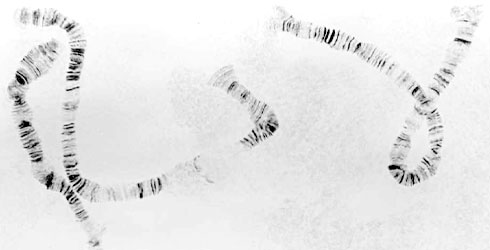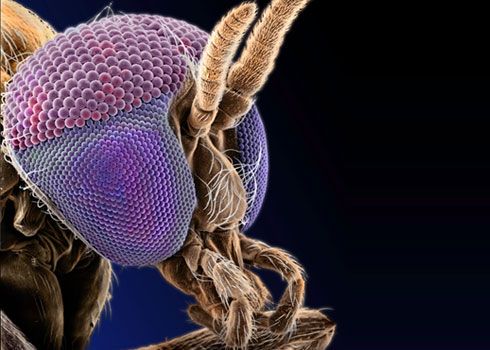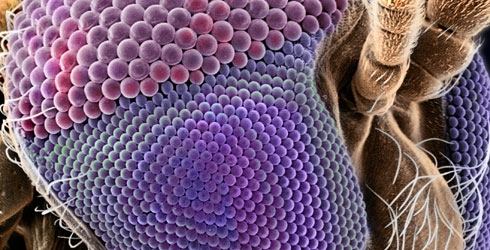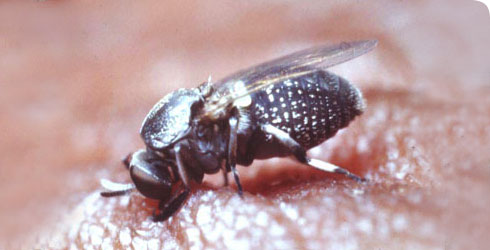Simulium yahense ‘Bioko’
River blindness, or onchocerciasis, is a tropical disease caused by infection with the parasitic worm Onchocerca volvulus.
In Africa it infects around 18 million people, and it is mostly transmitted from person to person by a group of blood-feeding blackflies of the Simulium damnosum complex - named as such because they are a 'damned nuisance'.
These different species are very closely related, and can only be identified by chromosomal analysis, but they show very important differences in their ability to transmit the infection to man.
Some do not bite humans at all, but the Bioko form of Simulium yahense was found to be probably the most effective vector of the parasite in the world.
Species detail
-

Taxonomy
The Bioko form of Simulium yahense was discovered in 1990, and is unique to the island of Bioko off the coast of West Africa. It may be a separate species of Simulium, but as it has now been eradicated, we may never know.
-

Distribution and habitat
Simulium yahense is found in the rain forests of west Africa, where its larvae live in forest streams. The adult female fly needs to take a blood meal to help her eggs develop, and commonly bites humans. Find out more about this fly’s lifecycle.
-

Eliminating disease
Museum scientists were instrumental in helping to eradicate the Bioko blackfly. Find out how they did it.
-

References
Get more references for Simulium yahense 'Biko'.
Images




Scanning electron microscope image of Simulium damnosum. The fly is a vector of a parasite which causes river blindness. Coloured artificially by computer.
© Natural History Museum, London
Scanning electron microscope image of Simulium damnosum. The fly is a vector of a parasite which causes river blindness. Coloured artificially by computer.
© Natural History Museum, London
Scanning electron microscope image of Simulium damnosum. The fly is a vector of a parasite which causes river blindness. Coloured artificially by computer.
© Natural History Museum, LondonAbout the author
Professor Rory Post
Former Research Entomologist (The Natural History Museum) and Honorary Professor (London School of Hygiene & Tropical Medicine).
A word from the author
"This was a very nasty insect, responsible for a great deal of human misery and the world is better off without it."
